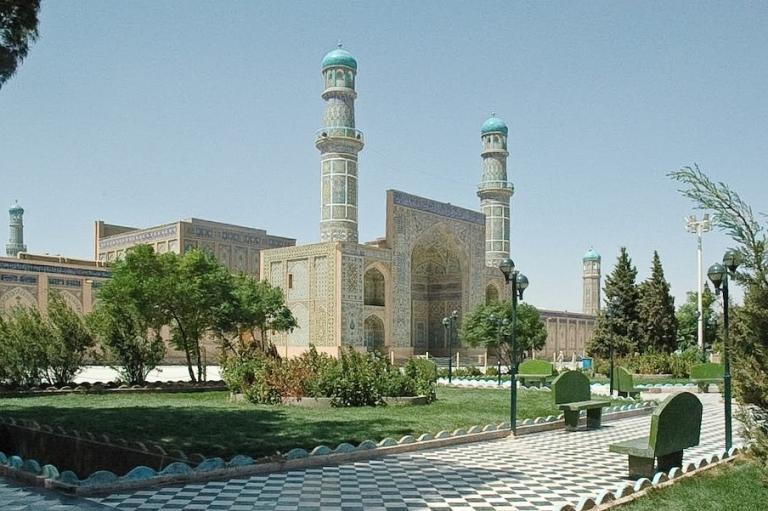
(Wikimedia Commons public domain)
I close this little series with the tenth and final installment of an article that I originally wrote for Richard C. Martin, et al., eds., Encyclopedia of Islam and the Muslim World, 2 vols. (New York: Macmillan Reference USA, 2004), on the subject of “Muslim Identity”:
The Persistence of Islamic Identity
Through the ideological turbulence of the past two centuries, the fundamental self-understanding of Muslims as Muslims remained intact, though sometimes tacit. The first Arab rebellion against Ottoman Turkish rule came with the rise of Wahhabism in the eighteenth and early nineteenth centuries, and its attempt to repair, Islamically, what it perceived as serious defects in Muslim society. Although that irruption was contained and reversed, Wahhabism again came to power, this time more lastingly, with the Saudi conquest of the holy cities of Mecca and Medina in 1925, and the discovery of Arabian petroleum in the 1930s has made advocates of this brand of militantly Islamic self-identification both wealthy and influential.
Resistance to European imperialism has been most effectively captained, in many instances, not by political or military officials but by popular religious figures. For example, Ahmad Brelwi, who was both an initiate of the Naqshbandi order and a Wahhabi, led armed resistance between 1826 and 1831 both to perceived encroachments of the Sikhs and to the rising menace of British power in northern India. Slightly later, from 1830 to 1859, Shamil of Daghistan, another Naqshbandi, led similar resistance against the infidel Russians, and, between 1832 and 1847, ‘Abd al-Qadir, a chief of the Qadiriyya dervish order, fought the infidel French in North Africa. Likewise, the struggle of the Sanusi order in Libya against the Ottomans and, later, the Italians, and the revolt of the Sudanese Mahdi, were explicitly conducted in the name of Islam, not local patriotism.
The Young Turk revolution faced a short-lived mutiny in 1909 when members of a pan-Islamic group calling itself the “Muhammadan Union” joined with the First Army Corps to demand imposition of the shari‘a. Later, the Young Turks themselves flirted with pan-Islamism (at least for propaganda purposes) with Enver Pasha’s 1918 launch of the “Army of Islam,” designed to liberate the Muslims of Russia. The previous year, the grand vizier Mehmed Said Halim Pasha had delivered a classic statement of pan-Islamic belief, declaring that “the fatherland of a Muslim is wherever the shari‘a prevails.” Even the communists, jockeying for power in the months after the fall of the Ottoman empire, found themselves constrained to invoke Islamic solidarity rather than class struggle.
The Muslim masses have continued to see the chief threat to them not in foreigners but in infidels. (That the two were often identical obscures but does not remove the distinction.) When, for example, on 2 November 1945, Egypt’s political leaders invited protests to mark the anniversary of the Balfour Declaration, resulting demonstrations turned into anti-Jewish riots and then into attacks on Catholic, Armenian, and Greek Orthodox churches. In January 1952, anti-British demonstrators in Suez, angry at the British, killed several Coptic Christians—arguably Egypt’s most Egyptian residents—and looted and burned a Coptic church. Many hundreds of miles away, meanwhile, the Algerian response to the French slogan of “Algérie française” was neither “Algérie arabe” nor “Algérie algérienne,” but “Algérie musulmane” (“Muslim Algeria”). During the Lebanese civil war, when civil government lost effective authority over the country, residents reverted to their essential identities as Maronite Christians, Druze, and Sunni and Shi‘i Muslims.
Posted from Fairfax, Virginia










